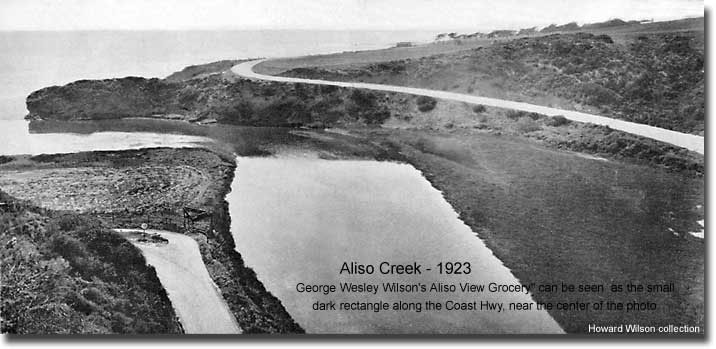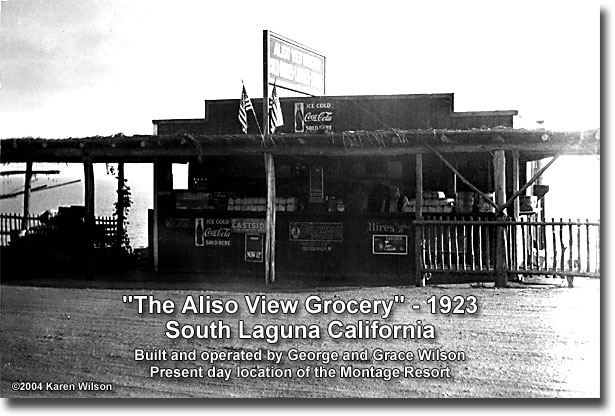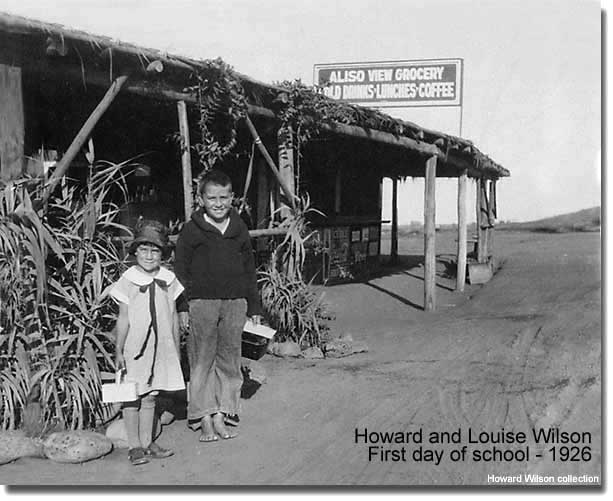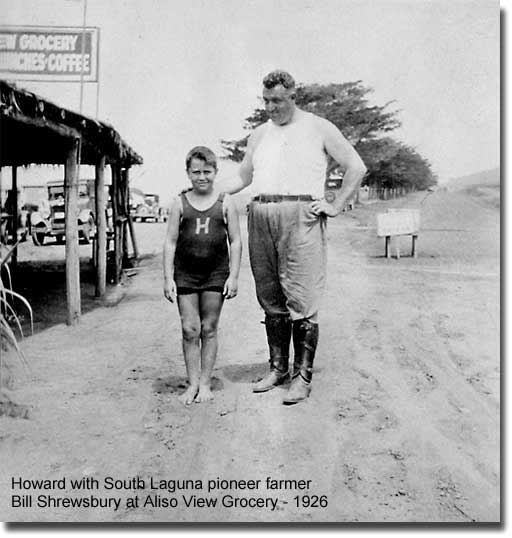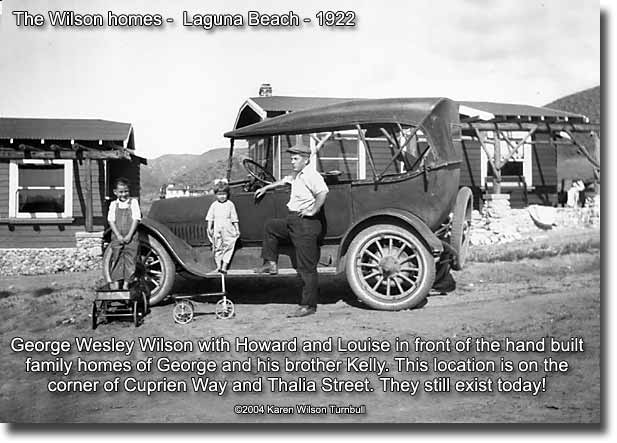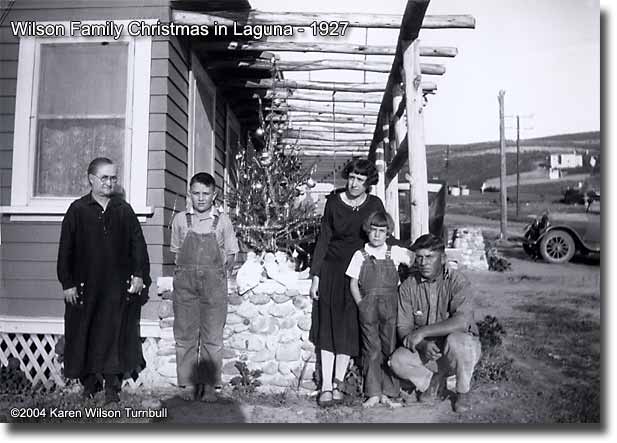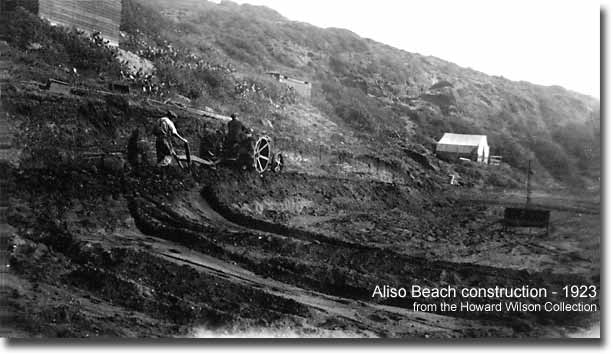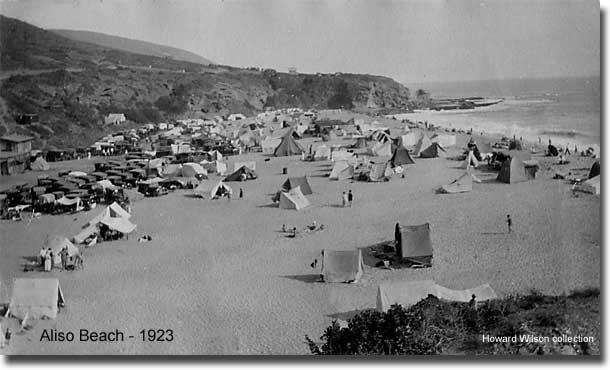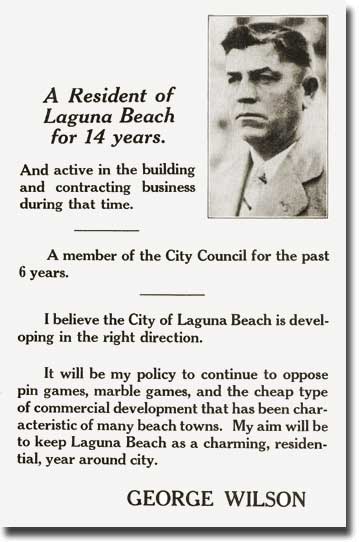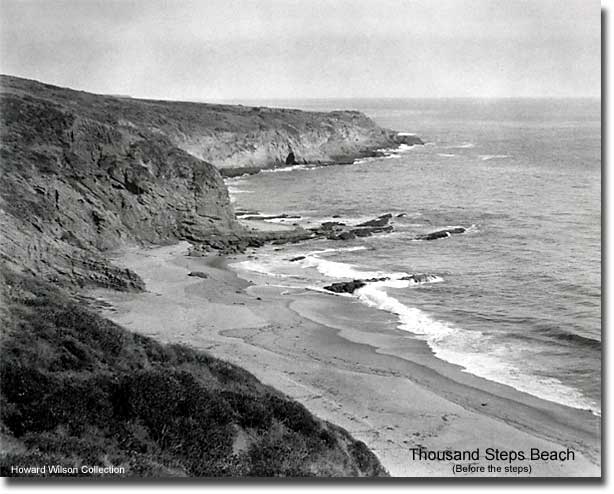|
I must tell you a most amazing story...
First of all, let me say that I knew Howard Wilson
to be the most modest and utterly honest man I have ever met.
He was never given to the slightest bit of exaggeration or the
telling of "tall tales". Heck, he couldn't tell the
tiniest fib if he tried real hard...and he would never even
try anyway, as it simply was not in his nature. So I was completely
astounded when he related the following story to me, because
knowing Howard, I know it's true....
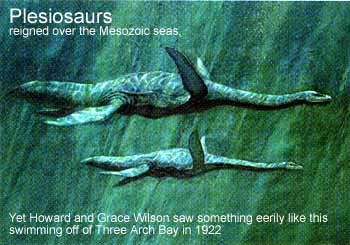 |
He told me of a bright and clear winter
day sometime back in 1922, when he was playing in the
family's Aliso view Grocery store, high on the cliffs
above Aliso Beach overlooking the ocean. Something dark,
way out in the water, caught his eye. He stopped what
he was doing, went over to the window and took a closer
look. His mother, Grace Wilson, came over to look too.
They both stood in amazed wonder at the window, as they
were looking at a very large creature with a black head
attached to a long glistening black neck sticking up out
of the water, and it was HUGE! It was moving
serenely through the water heading south, turning it's
head left and right as it cruised along. They watched
it for several minutes as it traveled toward Three Arch
Bay, finally disappearing as the projecting southern cliffs
blocked their view.
In the book "From the Ozarks to Aliso",
an oral history published by Karen Wilson Turnbull in
1975, Grace Wilson at age 88 tells us this about the incident...
|
Grace: "...Howard and I were looking
out the window at the same time and we saw this huge horses'
head sticking up out of the water. It stuck out way up high,
and it just sailed along. It was quite a ways out, but it
was close enough that we could see it's head bend. It was
just going along."
Karen: What did you think it was?
Grace: "A Horse!" (laughter)
Karen: Now they call it the Loch Ness
Monster, don't they?
Grace: "Well, I don't know. You
see these sea horses on television and they're little bitty
things ...nothing big...but this was a real big thing. I'll
never forget how that thing looked. Howard and I both know
what it looked like. Has he said anything about it?"
Karen: Yes, he drew a picture of it
once.
Grace: "We just called it a "sea
horse", because we couldn't think of nothing else."
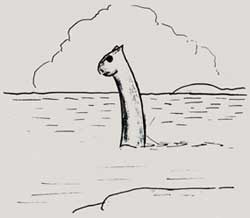 |
The "Sea Horse" drawn
by Howard Wilson
|
Howard confirmed the above account, and also told me that they
both decided that it was probably some kind of creature "that
got lost ...maybe it came down from Alaska". He told me
of how he too would never forget how big it was. And how
the colossal head looked left and right, how the neck would
bend, and how the big eyes even blinked a few times.
I asked if it could have been a tree trunk that might have
washed out of one of the rivers to the north, but Howard said
no. "It was much bigger then a tree. It would bend it's
neck almost in two", as the gigantic head would occasionally
dip down to the water, "then straighten back up. It turned
it's head to look directly at the shore, and I saw the eyes
blink." "No," he said, "It was alive."
It wasn't just drifting along with the current either. "You
could see the white water splashing up the front of the neck,
and the wake water trailing along behind as it swam south. It
was moving along pretty fast. It must have been powerful"
he said.
As a young boy growing up in a small town, he soon realized
that others became skeptical when he told them what he and his
mother had seen, and so he shut up about the whole thing. They
both told no one but family members about this amazing day from
then on. Not even when they later began to hear tales of a large
creature seen in a Scottish Loch did they mention their amazing
sighting.
Now you may choose not to believe this story, but not me, because
I knew Howard Wilson, and I know he wasn't joking - I could
see it in his eyes. His mother was a simple, poorly educated
girl just out from Missouri, who had no idea what type of sea
life was normal or not, so what did she care? Howard was tightlipped
about the incident throughout his life, and certainly wasn't
looking for attention. Besides, neither one of them had even
heard of the Loch Ness creature yet, or had even seen a picture
of a giraffe back then either for cripes sake, so why would
they both make this up?
Richard Buffum, writing in his column for the Los Angeles Times
in 1980, tells us of reliable sources besides the Wilson's who
also saw this creature, but much earlier.

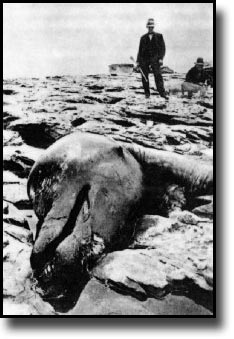 |
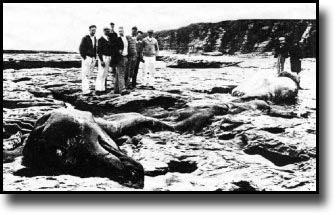
Oh...And by the way, take a look at these
two photos of a sea creature that washed up on the rocks
of Moore's Beach in Monterey Bay, California in 1925.
The neck was described as being about 20 feet long. The
sardine fishermen there often reported seeing creatures
like this in the 1920-40 era. It was hardly reported in
the media.
What is it? A rotting whale maybe? I don't
know, but it sure looks suspiciously like the creature
Howard and Grace tell of of seeing in 1922, don't you
think?
|
So anyway, I just wanted to tell the tale of an
honest man and his mother, and what they saw. You can take it
or leave it. But when I look out over the vast Pacific today,
I know in my heart that something astounding
went swimming by on that winter day so many years ago.
And I wait for it to swim by again.
|



